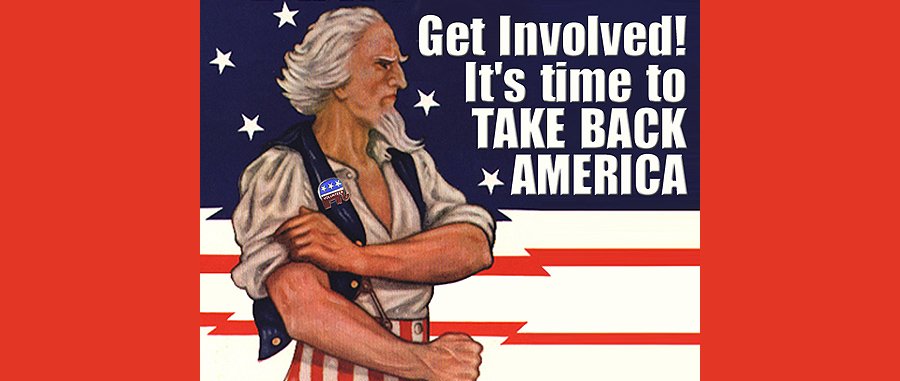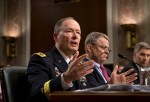In the 1980s and 1990s, we heard about America’s “culture war” in which traditionalists fought a long, painful struggle against “progressives” who sought profound changes in virtually every aspect of American life. Ultimately, the traditionalists lost. American culture is now so debauched that the ideals which in the past motivated millions to vote Republican are only held true by a small and shrinking percentage of the populace.
Videos by Rare
Many institutions shape a society’s culture, but four are especially important: family, education, the news and entertainment media, and religion.
During the half-century after World War II the typical traditional American family had two parents. There are fewer two-parent families today. More and more children are born out of wedlock, or living with a single parent due to rising rates of divorce.
Changes in America’s traditional family structure augur poorly for the GOP’s electoral fortunes. Unmarried people, for example, vote differently than their married gender counterparts. In 2012, to illustrate, 67% of unmarried women voted for Obama, but only 46% of married women backed him. Only 38% of married men voted for Obama, compared with 56% of unmarried men. The “marriage gap” in 2012 was 21 percentage points for women and 18 for men.
Two facets of the American public education system are relevant. The first is the declining quality of U.S. public education. Dumbing down the curriculum means students from kindergarten to college receive a watered-down academic experience.
A major consequence of the declining quality of America’s public education system is that politicians face ever-increasing numbers of “low-information voters” (LIVs). Many people go to the polls knowing virtually nothing about the presidential candidates and where they stand on major issues, their country’s history and political institutions, the ideals that have motivated earlier generations, and the likely consequences of their vote.
The second facet of American education that is relevant is the over-weaning presence of left-wing ideology and political correctness at all levels of schooling. Republicans are almost extinct in many university departments. Left-wing political correctness in Academe has dismantled America’s traditional culture and paved the way for Obama and his minions
Leftism has seeped into all levels of the public education system, K-12. Most teachers are members of the National Education Association or the American Federation of Teachers, two of the most radical left-wing public employees’ unions in the country. Since 1990, these unions have given over 90% of their campaign donations to Democrats. Textbooks are full of politically correct propaganda. Many students come out of these left-wing hot-houses inclined to be leftists.
In 2012, for example, Americans aged 18 to 29 were more likely than any other age category to describe their political views as liberal. Moreover, college educated young people were about ten percentage points more likely to say their political views were liberal than were the same-aged individuals who had not gone to college.
Perhaps it’s no coincidence, therefore, that in the last two presidential elections people between 18 and 29 years of age were disproportionately likely to vote for Obama: two-thirds in 2008 and three-fifths in 2012.
Lest one thinks the young have always voted for Democrats, in 1952, before American public education declined and schools became hot-houses of political correctness, 58% of those between 18 and 29 years old reported voting for Dwight Eisenhower. Despite the fact that George McGovern appealed to the young in 1972, 55% of those between 18 and 29 voted for Richard Nixon. In 1984, Ronald Reagan, who was 73 years old, received the votes of 57% of those under 30.
Turning to the mass media, the story is much the same whether one looks at the news or the entertainment industries.
The assertion that the mainstream news media (MSM) skews left is hardly novel. Can the MSM’s left-leaning bias be proven, and what effect does it have on public opinion? The best source for both questions’ answers can be found in Tim Groseclose’s Left Turn: How Liberal Media Bias Distorts the American Mind (2011). Drawing on detailed analyses of the MSM, he documents not only their left-wing bias, but also that the result is a leftward shift of the typical citizen’s political views.
The situation is just as bad when it comes to the entertainment media. Ben Shapiro’s Primetime Propaganda (2011) is a devastating study of how television programs shove left-leaning themes down audiences’ throats. Add the movie industry’s far-left bias to entertainment TV’s leftward slant, and one can only wonder why the average American isn’t further to the left than he/she is.
We come to religion. Historically, Americans were a very religious people. Until very recently, few Americans have been avowed non-believers, and a fairly small percentage has not regularly attended church or synagogue.
Things have changed. Pooled Gallup polls between January 2 and November 30, 2012, found that only 40% of the adult populace claimed to be “very religious,” compared to 31% who said they were “non-religious.”
There are important political consequences of increasing secularism in America. In 2012, for example, Obama received the votes of only 36% of Americans who attended religious services more than once a week, but he got 62% of the votes of those who said they never went to church or synagogue.
Religious identities’ impact extends beyond the ballot box. Pooled weekly Gallup polls in late 2011 found that 62% of people who said they were “very religious” either identified with or leaned toward the GOP. In contrast, 50% of people who said they were “non-religious” claimed to identify with or lean toward the Democrats.
In short, trends in four major institutions that shape a society’s culture — the family, education, the mass media, and religion — mitigate against the Republican Party.
All is not lost, however.
Recall what William F. Buckley said: “Find the most conservative person who can win elections, and unite behind her/him.” Don’t let the ideal become the enemy of the good.
Re-learn Ronald Reagan’s Eleventh Commandment: “Speak no ill of a fellow Republican.”
Take one page from the Democrats’ playbook: If a Republican – be he Chris Christy, Marco Rubio, whoever – comes under criticism, don’t join the chorus. Rally around her/him, and dare critics to do their worst. (Bill Clinton’s case shows how that works.)
If conservatives succeed in 2016, don’t stop. This was the mistake made in 2000 and 2004. Go to work to change the institutions that shape our culture. That will take lots of hard work, and much time.
Those who favor societal change that would — directly or indirectly — benefit the GOP must adopt a long-term mindset. Don’t expect change over-night. According to Charles Murray (Coming Apart, 2012), most of the negative changes in the four institutions discussed above occurred during the half-century between 1960 and 2010. We should not expect any improvements to occur in short order. Begin now.
Stephen Earl Bennett is a former professor of political science at the University of Cincinnati.



